#Indian money Review
Explore tagged Tumblr posts
Text

Jailer (2023) | Dubbed in Hindi
Muthuvel Pandian lives a peaceful life with his family, but a sudden intrusion of unwelcome parties in the lives of his family forces him to turn to a path he had long left behind.
#movies#free movie download#free movies#free money#freemotion#tamilmovie#south movies#jailer movie#rajinikanth#indian cinema#kollywood#jailer review#tamil
0 notes
Text
Things Biden and the Democrats did, this week #18
May 10-17 2024
The Justice Department endorses lifting many restrictions on marijuana. Since the 1970s marijuana has been classified as a Schedule I controlled substance, the most restrictive classification for drugs that are highly addictive, dangerous and have no medical use, like heroin. Schedule I drugs are nearly impossible to get approval for research studies greatly hampering attempts to understand marijuana and any medical benefits it may have. The DoJ recommends moving it to Schedule III, drugs with low risk of abuse like anabolic steroids, and testosterone. This will allow for greater research, likely allow medical marijuana, and make marijuana a much less serious offense. President Biden welcomed DoJ's decision, a result a review of policy he ordered. Biden in his message talked about how he's pardoned everyone convicted of marijuana possession federally. The President repeated a phrase he's said many times "No-one should be in jail just for using or possessing marijuana,"
The Department of Interior announced no new coal mining in America's largest coal producing region. The moratorium on new coal leases has been hailed as the single biggest step so fair toward ending coal in the US. The Powder River Basin area of Wyoming and Montana produces 40% of the nations coal, the whole state of West Virginia is just 14%. The new rule is estimated to reduce emissions by the equivalent of 293 million tons of carbon dioxide annually, the same as taking 63 million gas powered cars off the road.
Vice-President Harris announced that the Biden-Harris Administration had broken records by investing $16 billion in Historically Black Colleges and Universities. Harris, a graduate of Howard University, is the first President or Vice-President to have gone to a HBCU. The Administration's investment of $900 million so far in 2024 brought the total investment of the Biden-Harris administration in HBCUs to $16 billion more than double the record $7 billion. HBCUs produce 40% of black engineers, 50% of black teachers, 70% of black doctors and dentists, and 80% of black judges. HBCUs also have a much better record of helping social mobility and moving people out of generational poverty than other colleges and universities.
The Department of Housing and Urban Development announced $30 billion dollars in renewal funding for the Housing Choice Voucher Program. The program supports 2.3 million families that are in need of housing with vouchers that help pay rent. This funding represents a $2 billion dollar increase over last year.
The Department of Agriculture announced $671.4 million in investments in rural infrastructure. The money will go to project to improve rural electric grids, as well as drinking water and wastewater treatment infrastructure. The money will go to 47 projects across 23 states.
HUD announced a record breaking $1.1 billion dollar investment in Tribal housing and community development. HUD plans just over 1 billion dollars for the Indian Housing Block Grant (IHBG) program. This is a 40% increase in funding over 2023 and marks the largest ever funding investment in Indian housing. HUD also is investing $75 million in community development, supporting building and rehabbing community buildings in American Indian and Alaska Native communities.
The Department of Transportation announced $2 billion in investments in America's busiest passenger rail route, the Northeast Corridor between Washington DC and Boston. This is part of a 15 year, $176 billion plan to rebuild the corridor’s infrastructure and prepare for increased ridership and more trains. So far investments have seen a 25% increase, 7 million riders, over figures last year. a fully funded plan would almost double Amtrak service between New York City and Washington, D.C., and increase service between New York City and Boston by 50%. It would also allow a 60% increase in commuter trains.
HUD announced plans to streamline its HOME program. Currently the largest federal program to help build affordable housing, the streamlining of the rules will speed up building and help meet the Biden Administration's goal of 2 million new affordable housing units. HUD announced last week $1.3 billion dollars for the HOME program, which built 13,000 new units of housing in 2023 and helped 13,000 families with rental assistance
The Department of Interior announced $520 million in new water projects to help protect against drought in the western states. The funding will support 57 water related projects across 18 western states. The projects focus on climate resilience and drought prevention, as well as improving aging water delivery systems, and improving hydropower generation.
The Departments of Agriculture and HHS have stepped up efforts to wipe out the H5N1 virus prevent its spread to humans while protecting farmers livelihoods. The virus is currently effecting dairy cattle in the Texas panhandle region. The USDA and HSS are releasing wide ranging funds to help support farms equipping workers with Personal Protective Equipment, covering Veterinary costs, as well as compensating farmers for lost revenue. HHS and the CDC announced $101 million in testing an monitoring. This early detection and action is key to preventing another Covid style pandemic.
The Senate confirmed Sanket Bulsara to a life time federal judgeship in New York and Eric Schulte and Camela Theeler to lifetime federal judgeships in South Dakota. This brings the total number of judges appointed by President Biden to 197. For the first time in history the majority of a President's judicial nominees have not been white men.
Bonus: The 11th Circuit Court of Appeals ruled that transgender health insurance exclusions were illegal. The ruling came from a case first filed in 2019 where an employer refused to cover an employee's gender affirming surgery. The court in its ruling sited new guidance from the Biden Administration's Equal Employment Opportunity Commission that declared that Title VII of the Civil Rights Act protects trans people in the work place. These kinds of guidelines are often sited in court and carry great weight.
#Thanks Biden#Joe Biden#democrats#american politics#marijuana#marijuana legalization#climate change#climate action#HBCU#howard university#affordable homes#native american#Trans rights#judges#h5n1
215 notes
·
View notes
Text
2024 Book Review 32 – The Adventures of Amina al-Sirafi by Shannon Chakraborty
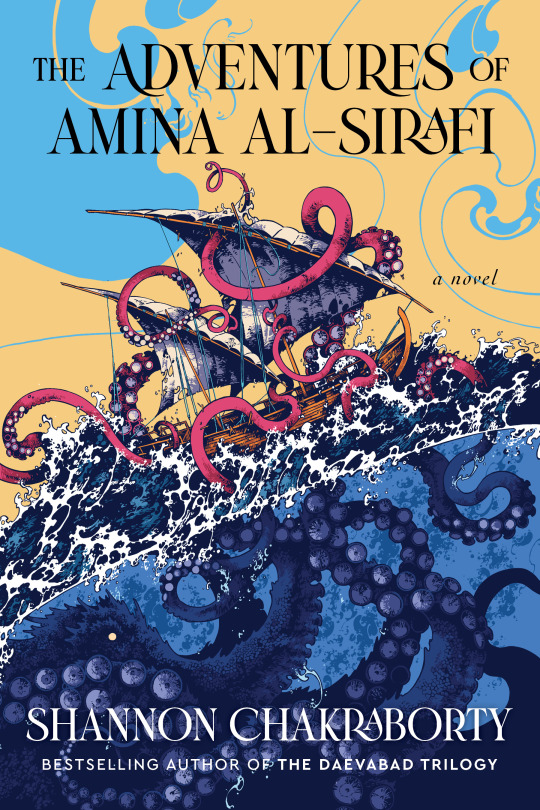
This is the first book this year I picked up specifically and entirely because it got a Hugo nomination; I’d previously vaguely heard of it, but never in any detail and the title didn’t really grab me. Despite what an exercise in masochism the whole ‘read every nominee for best novel and novella’ turned out to be last year, I’m actually very glad I stuck with it. Not sure I’d actually vote for it – this years best novel slate is actually incredibly strong – but it was an absolutely lovely and just fun read.
As one might assume, the story follows the eponymous Amina al-Sirafi, infamous and legendary corsair, smuggler and general rogue plying the Indian ocean sometime in the 12th century. Dragged out of an obscure retirement by the aristocratic mother of a former crewman whose fate still haunts her, she is sent on a mission to rescue the crewman’s kidnapped (or runaway) child by the twin incentives of more money than she could ever spend on one hand and blatant threats to the safety of her own family on the other. From there, she puts her crew together, has an unfortunate reunion with her demonic not-technically-ex husband, makes a pact with an island of officious peris, and races to prevent a Norman warlock from seizing control of an ancient relic to make war upon God.
The setting is honestly the point of this as much as the actual plot or any of the characters are. The late medieval Islamic maritime world and the wider Indian Ocean trading networks are an incredibly rich milieu to sink your teeth into, and one the author’s clearly fallen wholly in love with. I can’t speak for their accuracy, but little details of life and flourishes of historical terminology drip off every page, and the whole thing sings with the amount of research that was put into it. It’s the vanishingly rare work of fiction with a list of further reading at the end that actually makes me want to go hunt them down.
Specifically placing it in the twelfth century is kind of interesting, in terms of placement in the Islamic Golden Age – long, long after political power became fully fragmented and the Islamic world was linked more by economic and cultural ties, in the midst of the Crusades in the Levant, but still a few generations before the Mongols sack Baghdad. I really don’t have any ideas or assumptions about te why here, it’s just centuries later than the voyage of Sinbad the book is clearly riffing off of, so it makes me curious.
The enthusiastically researched and real-feeling setting does sadly kind of stop with the characters. Amina is sincerely religious and comfortable with the supernatural in a way that feels much more fitting than the vast majority of fantasy protagonists, but in every other sense she is clearly written to be relatable and sympathetic to an assumed audience of modern liberals. (Near-)Queernorm settings are great, but does jar with the fixation on historical grounding a bit. (The whole beat where dragging a runaway bride back to their family and decades older rich fiancee is unfortunate but for their own good until it’s realized they’re trans also kind of feels like a parody of a certain kind of identity-focused liberalism).
Between this and the Radiant Emperor duology I’m definitely rediscovering a real love for historic low fantasy. The research burden is immense but it’s hard to beat the actual past for making a world that feels lived in and real, and provide the vital sense that there are a thousand other stories happening just out of shot. The complete lack of generic-western-fantasy magic and monsters is also nearly as appreciated as the lack of castles and earls.
Which is good, really, as if you ignore the setting there isn’t really much to chew on here. To an extent this seems deliberate – the story is trying to be a pulpy, larger-than-life swashbuckling adventure, what with the getting dragged out of retirement for one more big score and the getting the band back together and the cackling 1.5-dimensional villain trying to make himself as unto god. In the main it absolutely succeeds at this (though the introduction of a generous and competent pirate captain who lends Amina a ship and a spirit-cutting magic sword out of nowhere at the end of the second act does strain things a bit). It does end up feeling a bit like using the most gorgeous, lusciously details stage in the world for a bunch of puppets to act out a pantomime, though – Amina is basically the only character in the entire story that feels like a person instead of a cartoon. They are, at least, more amusing cartoons than not. Raksh the murderous but cowardly ambition-seeking incubus husband was a highlight.
All in all, a very fun, page-turning read. I’m looking forward to the sequel.
58 notes
·
View notes
Text
THIS DAY IN GAY HISTORY
based on: The White Crane Institute's 'Gay Wisdom', Gay Birthdays, Gay For Today, Famous GLBT, glbt-Gay Encylopedia, Today in GGay History, Wikipedia, and more … January 2



1801 – Explorers Alexander Henry and David Thompson make an entry in their journal titled Exploration and Adventure among the Indians on the Red, Saskatchewan, Missouri, and Colombia Rivers describe a Native American known as Berdache, son of Sucrie, who is a "curious compound between a man and a woman."


1900 – (Charles William) Billy Haines (d.1973) was an American film actor and interior designer. He was a star of the silent era until the 1930s, when Haines' career was cut short by MGM Studios due to his refusal to deny his homosexuality. Haines never returned to film and instead started a successful interior design business with his life partner and was supported by friends in Hollywood.
Billy Haines was born in Staunton, Virginia. Haines ran away from home at the age of 14, accompanied by another unidentified young man whom Haines referred to as his "boyfriend". The pair went to Hopewell, which had a reputation for immorality. Haines and his boyfriend got jobs working at the local DuPont factory for $50 a week. To supplement their income, the couple opened a dance hall, which may have also served as a brothel. His parents, frantic over his disappearance, tracked him through the police to Hopewell. Haines did not return home with them, remaining instead in Hopewell and sending money back home to help support the family. The couple remained in Hopewell until most of the town was destroyed by fire in 1915. Haines moved to New York City settling into the burgeoning gay community of Greenwich Village. It is unclear whether his boyfriend accompanied him.
He worked a variety of jobs before becoming a model. Talent scout Bijou Fernandez discovered Haines as part of the Samuel Goldwyn Company's "New Faces of 1922" contest and the studio signed him to a $40 a week contract.
Haines's career began slowly, as he appeared in extra and bit parts, mostly uncredited. His first significant role was in Three Wise Fools (1923). However, he continued to play small, unimportant parts at Goldwyn. It was not until they loaned him to Fox in 1923 for The Desert Outlaw that he got the opportunity to play a significant role. In 1924, MGM lent Haines to Columbia Pictures for a five-picture deal. The first of these, The Midnight Express (1924), received excellent reviews and Columbia offered to buy his contract. The offer was refused and Haines continued in bit roles for Goldwyn.
On a trip to New York in 1926, Haines met James "Jimmie" Shields, probably as a pick-up on the street . Haines convinced Shields to move to Los Angeles, promising to get him work as an extra - some sources say Shields worked as Haines' "double' in his films. The pair were soon living together and viewed themselves as a committed couple.
In 1933, Haines was arrested in a YMCA with a sailor he had picked up in Los Angeles' Pershing Square. Louis B. Mayer, the studio head at MGM, delivered an ultimatum to Haines: choose between a sham marriage (also known as a "lavender marriage") or his relationship with Shields. Haines chose Shields and they remained together for almost 50 years. Mayer subsequently fired Haines and terminated his contract, quickly recasting Robert Montgomery in roles that had been planned for Haines. Haines did make a few minor films then retired from film.
Haines and Shields began a successful dual career as interior designers and antique dealers. Among their early clients were friends such as Joan Crawford, Gloria Swanson, Carole Lombard, Marion Davies and George Cukor. Their lives were disrupted in 1936 when members of the Ku Klux Klan dragged the two men from their home and beat them, because a neighbor had accused the two of propositioning his son. Crawford, along with other stars such as Claudette Colbert, George Burns, Gracie Allen, Kay Francis, and Charles Boyer urged the men to report this to the police. Marion Davies asked her lover William Randolph Hearst to use his influence to ensure the neighbors were prosecuted to the full extent of the law, but ultimately Haines and Shields chose not to report the incident.
Haines and Shields remained together for the rest of their lives. Joan Crawford described them as "the happiest married couple in Hollywood."
Haines died from lung cancer in Santa Monica, California at the age of 73, a week short of his 74th birthday, which was on the new year of 1974. Soon afterward, Shields, who suffered from what many believe to be Alzheimer's Disease, put on Haines' pajamas, took an overdose of pills, and crawled into their bed to die. They were interred side by side in Woodlawn Memorial Cemetery.


1928 – Ray Kassar was president, and later CEO, of Atari Inc. from 1978 to 1983. He had previously been executive vice-president of Burlington Industries, the world's largest textile company at the time, and president of its Burlington House division. A member of the Board of Directors, Kassar had spent over thirty years at Burlington.
Ray Kassar was hired in February 1978 as president of Atari Inc.'s consumer division by Warner Communications, which at the time owned Atari. By this time, rifts had begun to develop between the original Atari Inc. staff (most of whom had engineering backgrounds) and the new hires brought in by Warner (who, like Kassar, mostly had business backgrounds).
In November 1978, when Atari Inc. co-founder Nolan Bushnell left the company after a dispute with Warner over the future of Atari Inc., Kassar became CEO. Under his leadership, sweeping changes were made at Atari and the laid-back atmosphere that had existed under Bushnell's leadership all but disappeared. Kassar's twenty-five years at Burlington Industries had given him a taste for order, organization, and efficiency and his efforts to revamp Atari along similar lines provoked substantial animosity. Kassar shifted the focus away from game development and more toward marketing and sales. Atari Inc. began to promote games all year around instead of just at the Christmas season. R&D also suffered deep cuts and the discipline and security at Atari Inc. became strict.
In a sense he also helped create the video game maker Activision. While Kassar was at Atari he angered a large number of the game developers by not crediting them in any way to the point where they walked out of Atari. He told them that they were no more important to the games then the people that worked on the assembly line. They started their own company and called it Activision.
Ray Kassar is the namesake the widely popular game “ Yar’s Revenge.” The creator of the game was a former employee at Atari “Yar” is Ray spelled backwards. The title is a deliberate jab at Kassar, mocking his dictator-like work ethic as well as his flamboyant manner. Ray Kassar was known by the employees at Atari to be an extremely flamboyant homosexual outside the work place. Employees didn't care what his sexual preferences were, but they were irked by his daily habit of being chauffeured to work in a limo and then proceeding to make grand entrances into the office.
Kassar built Atari into a video game giant that it was, before he was forced to resign because of allegations of insider trading in 1983. He sold all of his shares in Atari just hours before a report was published that Atari had suffered monetary loses in the millions.


1929 – Charles Beaumont (d.1967) is born Charles Leroy Nutt. He was an American author of speculative fiction, including short stories in the horror and science fiction subgenres. He is remembered as a writer of classic Twilight Zone episodes, such as "The Howling Man", "Miniature", "Printer's Devil", and "Number Twelve Looks Just Like You", but also penned the screenplays for several films, among them 7 Faces of Dr. Lao, The Intruder, and The Masque of the Red Death.
In 1954, Playboy magazine selected his story “Black Country.” Playboy has been loved by straight men for decades but it was this gay short story that built its reputation. Hugh Hefner was the only one to accept a science fiction story about heterosexuals being the minority against homosexuals. When letters poured in, he said: 'If it was wrong to persecute heterosexuals in a homosexual society, then the reverse was wrong too.'


1949 – Christopher Durang is an openly gay playwright, screenwriter, and actor whose works have been produced on and off-Broadway and regionally since the late 1970s. A fiercely satirical comic dramatist, Durang often incorporates gay themes and gay characters in his plays.
Durang's breakthrough in achieving critical and financial success came in 1981 with the Off-Broadway production of his scathing one-act play, Sister Mary Ignatius Explains It All For You (written in 1979), which has over the years become a popular vehicle for actresses as diverse as Nancy Marchand, Cloris Leachman, Lynn Redgrave, and many others.
In Sister Mary Ignatius... , Durang draws on his childhood experiences as a student in Catholic school. He satirizes the unbending dogmatism of the eponymous Catholic nun, who is oblivious to the absurdity of what she believes and to the harm that she causes. When four former students, one of them a contented gay man, return to embarrass Sister, she shoots two of them (including the gay man) dead.
Durang often creates hyper-sexual characters (both gay and straight) in an attempt to unhinge attitudes about sexual behavior. In Sister Mary Ignatius..., the gay character explains his homosexuality to his former teacher: "I was seduced when I was in the seminary... and then I went to New York and I slept with five hundred different people."
In Durang's more recent work, straight characters take on the hyper-sexuality stereotypically associated with gay men. Lulu in Sex and Longing needs to have sex every fifteen minutes, while in Betty's Summer Vacation, Buck proudly displays a scrapbook containing photos of his penis. Durang's is a distinctive voice in American comedy, at once angry, intelligent, and queer.
He lives in Bucks County with his partner, John Augustine; they have been together for more than 20 years.


1961 – Todd Haynes is an American independent film director and screenwriter. He is best known for his feature films Superstar: The Karen Carpenter Story, Poison, Velvet Goldmine, Safe, and the Academy Award-nominated Far from Heaven and I'm Not There.
In 1987, while an MFA student at Bard College, Haynes made a short, Superstar: The Karen Carpenter Story, which chronicles the life of American pop singer Karen Carpenter, using Barbie dolls as actors. The film presents Carpenter's struggle with anorexia and bulimia, featuring several close-ups of Ipecac (the prescription drug Carpenter was reputed to have used to make herself vomit during her illness). Carpenter's chronic weight loss was portrayed by using a "Karen" Barbie doll with the face and body whittled away with a knife, leaving the doll looking skeletonized. The film is also notable for staged dream sequences in which Karen, in a state of deteriorating mental health, imagines being spanked by her father.
Superstar featured extensive use of Carpenter songs, showcasing Haynes' love of popular music (which would be a recurring feature of later films). Haynes failed to obtain proper licensing to use the music, prompting a lawsuit from Karen's brother Richard Carpenter for copyright infringement. Carpenter was reportedly also offended by Haynes' unflattering portrayal of him as a narcissistic bully, along with several broadly dropped suggestions that he was gay and in the closet. Carpenter won his lawsuit, and Superstar was removed from public distribution; to date, it may not be viewed publicly. Bootlegged versions of the film are still circulated, and the film is sporadically made available on YouTube.
Haynes' 1991 feature film debut, Poison, garnered Haynes further acclaim and controversy. Drawing on the writings of "transgressive" gay writer Jean Genet, the film is a triptych of queer-themed narratives, each adopting a different cinematic genre: vox-pop documentary ("Hero"), 50s sci-fi horror ("Horror") and gay prisoner love story ("Homo"). The film explores traditional perceptions of homosexuality as an unnatural and deviant social force, and presents Genet's vision of sado-masochistic gay love as a subversion of heterosexual norms, culminating with a marriage ceremony between two gay male convicts. Poison marked Haynes' first collaboration with producer Christine Vachon, who has since produced all of Haynes' feature films.
Poison was partially funded with a grant from the National Endowment for the Arts. The film subsequently became the center of a public attack by Reverend Donald Wildmon, head of the American Family Association, who criticized the NEA for funding Poison and other works by gay and lesbian artists and filmmakers. Wildmon, who had not viewed the film before making his comments publicly, condemned the film's "explicit porno scenes of homosexuals involved in anal sex", despite no such scenes appearing in the film.
Poison went on to win the 1991 Sundance Film Festival's Grand Jury Prize, establishing Haynes as an emerging talent and the voice of a new transgressive generation. The film writer B. Ruby Rich cited Poison as one of the defining films of the emerging New Queer Cinema movement, with its focus on maverick sexuality as an anti-establishment social force.
Haynes achieved his greatest critical and commercial success to date with Far From Heaven (2002), a 1950s-set melodrama inspired by the films of Douglas Sirk about a Connecticut housewife Cathy Whittaker (Julianne Moore) who discovers that her husband (Dennis Quaid) is secretly gay, and subsequently falls in love with Raymond, her African-American gardener (Dennis Haysbert).
Haynes is openly gay. He currently lives in Portland, Oregon.


2005 – Bonnie Bleskachek became the first openly lesbian fire chief of a major city, Minneapolis. She was demoted two years later amid claims of harassment and discrimination, but return to the department as a staff captain. She co-founded the Minnesota Women Fire Fighters Association.


21 notes
·
View notes
Text

August is over! My reading month felt like it took forever even though otherwise, the month flew by. I blame this half on my top two reads of the month, which I was only reading in short snippets, and half on a number of lackluster reads and DNFs. I'm hoping to get back into my usual habits in September.
I did do better on reading off my physical TBR though! Even though one book was a "aw man, what do I read now?" and two more were, "I'm behind on my goal, quick, read something fast!" Plus the T. Kingfisher, which was graciously provided by my work, as was Running Close to the Wind. (Finally a month where I didn't spend money to add to my library!)
As for my top reads, The Salmon Shanties would be near the top of my list even if there wasn't a degree of reverse-nepotism involved. Absolutely excellent poetry collection, very layered and complex. If you're into Canadian poetry or poetry-of-place, pick it up! And Rose/House, once I got it back from the library because my Libby hold ran out, was absolutely fantastic! As was the quality of the French translation, because it sounded like Martine. So very, very glad I had the nerve (and linguistic ability) to read it. Super-creepy and I'm glad Tor's picked it up so I can hype the heck out of it next year. And then there's Jinn-Bot, which I wrote an actual review for.
On the other end of the list, sigh. I DNFed one book for feeling kind of trite, and another for being too predictable, and probably should have DNFed Voyage of the Damned for being uneven but I needed to know who the killer was. The Library Thief I'm also counting as lackluster—very good book, just wasn't for me or what I was expecting. Still deserves a 7.
Lula Dean, on the other hand, was surprisingly good! Fun and satirical and just plain entertaining. Read it in a couple days and it would likely be higher on my list except my reasons to be "glad to have read them" this month are less about quality and entertainingness than usual. I can't put "really liked this" above "finally I get to read a new book by X!", for instance. Or necessarily above "learned stuff!"
You might notice a distinct lack of any other news, and that's because there is none. September may be marginally more exciting, we'll see. (I know there'll be a bigger book haul.)
Anyway, on to September now, and in the meantime, here's my list everything I read this month, in the rough order of how glad I was to have read them.
The Salmon Shanties - Harold Rhenisch
A collection of poems centered on and celebrating Cascadia in all its facets (or taking it to task, as the case may be). Out in September.
10/10
🇨🇦
warning: mentions racism, colonization, genocide
digital reading copy
Rose/House - Arkady Martine
There is a body within Rose House—two, if you count its architect, who ordered the house shuttered with his passing and left to its AI. Only one person is allowed to enter now, and she’s accounted for. And yet there is a body within Rose House….
9/10
🏳️🌈 author
warning: descriptions of a dead body
library ebook
The Jinn-Bot of Shantiport - Samit Basu
Lina and Bador want freedom: from surveillance, from power structures, for their city, for all bots, or just for their family. This might come from cunning, or revolution, or a lost ancient artifact, or an underground bot-battle, or swaying a visiting space hero or the Not-Prince. Much more than an Aladdin retelling.
8/10
🏳️🌈 secondary characters (multisexual, achillean), Indian-coded cast, Indian author
warning: discusses colonization and oppression, references police violence
reading copy
Unwritten, Vol. 8 - Mike Carey with Peter Gross, Dean Ormston, Yuko Shimizu
When Tommy Taylor learns that Lizzie is trapped in the land of the dead, he goes to rescue her—but he’s unprepared for his adventures there, or the wider implications.
8/10
Indigenous Australian secondary character
off my TBR
All Quiet on the Western Front - Erich Maria Remarque
Paul Bäumer recounts his time serving in the German army in WWI.
7/10
warning: war, death, animal death, gore, injury
off my TBR
A Sorceress Comes to Call - T. Kingfisher
Cordelia’s terrible mother has decided to marry a squire. Cordelia knows he and his sister don’t deserve that—but how to stop her, when she can do magic?
7.5/10
warning: child abuse, torture, murder, animal cruelty and death
finished copy received through work
A Man and His Cat, Vol. 4 - Umi Sakurai
Kanda gets the courage to make a new friend and revisit an old situation.
7/10
Japanese cast, Japanese author
off my TBR
A Gentleman from Japan - Thomas Lockley
The true story of a Japanese man who was brought to the court of Elizabeth I and influenced early modern English science.
7.5/10
warning: slavery, orientalism, war and violence
library book
Lula Dean’s Little Library of Banned Books - Kirsten Miller
In Troy, Georgia, the fight for public decency is kicked off by Lula Dean, who craves attention and loves her Southern history—and her fencepost library, where someone’s put wholesome jackets over books she’s tried to ban….
7/10
ensemble cast including Black, 🏳️🌈 (gay, lesbian), and Indo-American POV characters
warning: Nazis, anti-Semitism, anti-Black racism, homophobia, rape, suicide
reading copy
The Library Thief - Kuchenga Shenjé
Florence talks her way into a job repairing a lord’s library, but is quickly drawn in by the mysterious death of the lady of the house. A gothic novel centering race, gender, and other marginalizations in late Victorian England.
7/10
Black British main character, Black British secondary characters, 🏳️🌈 secondary characters (trans woman, sapphic), Black British author
warning: racism, including slurs; rape, abuse, misogyny, queerphobia
library book
The Voyage of the Damned - Frances White
A grand state voyage is upset by murder and it’s up to the lowly, non-Blessed Ganymedes to catch the killer before they dock. Goddess help them all if he doesn’t….
5.5/10
🏳️🌈 protagonist (multisexual), fat protagonist, 🏳️🌈 secondary characters (nonbinary, ace, trans man, sapphic, achillean), Indian-, African-, and Japanese-coded secondary characters
warning: murder, injuries, blood, colonial thinking, attempted genocide, suicidal thoughts
reading copy
DNF
Remedial Magic - Melissa Marr
Safe and ordinary Ellie meets a mysterious woman in her library, and is whisked to a fantasy world where she’s probably a witch—and almost certainly in trouble.
🏳️🌈 protagonist (sapphic), 🏳️🌈 secondary character (sapphic), 🏳️🌈 author
reading copy
Casket Case - Lauren Evans
Garrett stops to ask for directions at Nora’s casket shop and they hit it off. Unfortunately he works for Death…. Out in September.
African-American secondary characters
reading copy
Currently reading
A Natural History of Dragons - Marie Brennan
A memoir by Lady Trent, renowned natural philosopher and adventuress, but covering her childhood and first expedition, to the mountain highlands of Vystrana, and the troublesome dragons encountered there.
library book
Music from the Earliest Notations to the Sixteenth Century - Richard Taruskin A history of early written European music, in its social and political contexts. The Penguin Complete Sherlock Holmes - Arthur Conan Doyle Victorian detective stories.
disabled POV character (limb injury), occasional Indian secondary characters
warning: racism, colonialism
Monthly total: 11 Yearly total: 70 Queer books: 1 Authors of colour: 3 Books by women: 6 Authors outside the binary: 0 Canadian authors: 1 Classics: 1 Off the TBR shelves: 4 Books hauled: 2 ARCs acquired: 3 ARCs unhauled: 6 DNFs: 2
January February March April May June July
33 notes
·
View notes
Text
Jo March: The Pragmatist
One of the most common complaints I hear about Little Women is the way it ends. Many people think that Jo stifles her creativity and gives up on her writing in order to marry Professor Bhaer, which isn't true. Jo writes a very successful book in one of the sequels, Jo’s Boys, but let's set that to the side because what I really want to discuss is what Jo actually thinks of the writing she’s doing in the latter half of Little Women.
In Part I of Little Women, we see the type of writing that Jo does prior to selling her work. In “A Merry Christmas,” the family puts on The Witch’s Curse, an Operatic Tragedy, which seems to be a Shakespearean melodrama. In “Jo Meets Apollyon,” the book Amy burns in anger is “half a dozen little fairy tales.” In “The P.C. and P.O.,” Jo writes a comedic poem and a lament for one of Beth’s cats. Finally, in “Secrets,” Jo submits a tragic romance to The Spread Eagle (one assumes that this name was less funny when Little Women was originally published in 1868.) The Spread Eagle doesn’t pay beginners, so we can assume that everything written up until this point is the type of writing Jo does for herself when there’s no pressure to make changes to please an editor in order to get a paycheck.
Part II begins with the chapter “Gossip,” which catches us up on what’s been happening over the past three years. Jo is now a regular contributor to The Spread Eagle who receives a dollar for each story. She refers to them as “rubbish,” so she doesn’t seem particularly proud of the writing she’s doing, but she’s in the process of writing a novel she hopes will win her fame and prestige.
In “Literary Lessons,” Jo observes a boy reading a newspaper story illustrated with a dramatic scene of “an Indian in full war costume, tumbling over a precipice with a wolf at his throat” and two men stabbing each other while a terrified woman flees the scene. When the boy offers to share, Jo agrees more because she likes the boy than because of an interest in the story. The story is sensation fiction, which Jo privately thinks is trash anyone could have written. However, when she learns the author is making a good living from her stories, Jo decides to try her hand at this new style of writing. She submits the story to a contest the newspaper is running and wins $100. Jo uses the money to send Beth and Marmee to the seashore. She’s proud of her ability to earn money to help her family, so she continues to write these kinds of stories since they are lucrative.
She later finishes her novel and sends it to multiple publishers, only one of whom is interested, and only if there are major cuts and revisions. After conflicting advice from her family, she decides to make the requested changes, which earns her $300 and some very mixed reviews that lead Jo to respond, “Some make fun of it, some over-praise, and nearly all insist that I had a deep theory to expound, when I only wrote it for the pleasure and the money. I wish I’d printed it whole or not at all, for I do hate to be so misjudged.”
In “Calls,” Jo reluctantly joins Amy to return calls to their neighbors with generally disastrous results. One incident involves Jo receiving a compliment on her writing.
Any mention of her “works” always had a bad effect upon Jo, who either grew rigid and looked offended, or changed the subject with a brusque remark, as now. “Sorry you could find nothing better to read. I write that rubbish because it sells, and ordinary people like it.”
This passage makes it very clear that Jo isn’t proud or fond of what she is writing. The reception to her novel combined with the money she can make from sensation fiction has changed Jo’s primary motivation for writing. She is no longer doing it for the love of writing or because she’s pursuing her dreams. She’s trying to make money to help out her family.
I don’t think this is necessarily a bad thing. We all have periods in our life when we take a job that we aren’t extremely excited about because it will allow us to achieve something that is more important to us. However, it’s a different narrative than is usually spun about Jo who is frequently depicted as continually working towards her dream. There is a role in Castles in the Air that fits that narrative. It’s called the Striver, but I don’t think that’s the role that Jo has. Instead, Jo is the Pragmatist, which is a role about setting aside your dreams for the moment because you have other responsibilities. Both are interesting conflicts, but they lead to very different conclusions when it comes to Jo’s story!
With that in mind, let’s take a look at “Friend,” which follows Jo in New York. She’s now writing for a newspaper called the Weekly Volcano, which has required Jo to make so many changes to her stories that she decides to have her work published anonymously. That certainly wouldn’t be a good career move if she was truly trying for fame! She’s also come to greatly respect a man staying at her boarding house named Professor Bhaer. One day, he makes a comment about a newspaper that publishes sensation stories like the ones Jo is writing. Her response is telling:
Jo glanced at the sheet, and saw a pleasing illustration composed of a lunatic, a corpse, a villain, and a viper. She did not like it; but the impulse that made her turn it over was not one of displeasure, but fear, because, for a minute, she fancied the paper was the “Volcano.”
Professor Bhaer notices her look and guesses the truth, but instead of letting her know this, he decides to gently explain his reasoning. After this, Jo goes back to reread the stories she has been writing and decides to burn them. Far from stifling her creativity, Professor Bhaer is the one who sees that Jo is ashamed of her writing and reminds her that she is capable of more.
This is part of a series on the literary inspirations behind game elements for my upcoming tabletop RPG based on the novels of Louisa May Alcott and L.M. Montgomery, Castles in the Air. To see a complete list of the posts I’ve written thus far, check out the master post. If you would like more information, visit the game’s website!
#Louisa May Alcott#Little Women#Jo March#Jo Bhaer#Friedrich Bhaer#Professor Bhaer#Castles in the Air#Storybrewers Roleplaying#tabletop roleplaying#tabletop RPG#ttrpg#indie ttrpg
56 notes
·
View notes
Text
Based on the response I've gotten from a lot of PJO fans since the show came out, I'm suddenly REALLY nervous about the PnF reboot.
Like...people have fully forgotten that you can critique a show and still enjoy it. You can say "Hmm, I didn't like this particular choice, but I really liked this one!" and everyone is like "OH SO YOU HATE IT THEN??? YOU WANT IT TO FAIL??" Like that is currently what the PJO fandom is like and it's exhausting
And I'm already seeing takes like that in the PnF fandom on TikTok (fandoms suck over there even more than they do here y'all). Saw a video from a creator who was hoping they'd do better with Baljeet and his Indian heritage this time and SO many of the comments were like, "So you think Dan and Swampy are racist? Is that it??? You want the reboot to fail??"
They never said that!! And frankly YES, a lot of Baljeet's character is based on a racist stereotype, which Dan and Swampy have acknowledged
Like jfc if even the creators can admit when they fucked up, why can't the fandom?
It's actually exhausting being in fandoms anymore because people seem to forget that you can criticize things in a piece of media while still thoroughly enjoying it. They act like you're screaming these things directly at the writers/producers/actors instead of just making a post that you only expected your 12 mutuals to see.
Honestly I blame the current way media is produced for this, where companies claim that they're cancelling shows because of a lack of interest/negative reviews. You shouldn't be afraid of a show getting cancelled because some nobody in bumfuck Nebraska made a video on how they don't like the lighting. Like it's actually insane that people think an individuals supposed dislike of a show is the problem and not money hungry companies being pissed they didn't make millions on release date.
Anyway. I'll keep my ~12 mutuals when the reboot of PnF comes out. Y'all are gonna be the only ones who understand nuance.
87 notes
·
View notes
Text
On August 27, Sabir Malik, a migrant worker in the Indian state of Haryana, was lured from his home and beaten to death by a mob of at least 10 Hindu men. They suspected that Malik, a Muslim, had eaten beef. Lab tests run by local police would later find that he hadn’t. But it didn’t matter: The attack was led by “cow vigilantes,” the name for Hindu nationalist militias and mobs that take it upon themselves to violently enforce Hindu supremacy on India’s minority communities, particularly Muslims.
A new report from the Center for the Study of Organized Hate (CSOH) shared exclusively with WIRED found that Instagram, which is owned by Meta, is becoming a key avenue for cow vigilantes to share their violent exploits with a wider audience, and even raise money.
“It's clear that Meta is complicit in the proliferation or the flourishing of cow vigilantism in India,” says Raqib Hameed Naik, founder and executive director of CSOH. These practices, Naik says, are likely in violation of Meta’s own policies around hateful and violent content.
Between February and August 2024, CSOH identified and analyzed 1,023 Instagram accounts run by users involved in cow vigilantism. Researchers found that 30 percent of the accounts shared content showing physical violence against Muslims involved in the cattle business. Some videos flagged by CSOH show high-speed car chases down India’s highways, where cow vigilantes tail and try to pull over trucks carrying cows. Others are more graphic, showing vigilantes beating men who they claim are engaging in cow slaughter or the cattle trade. One video, which garnered 5,200 likes, showed three frightened Muslim men in the trunk of a car. Another video shows a cow vigilante beating an older Muslim man with a wooden bat. That video received more than 1,200 likes.
The 121 Instagram Reels analyzed by CSOH showing physical violence against people transporting cattle garnered over 8.3 million views, and most were not labeled with the Meta filter that warns users of graphic content. CSOH found 53 accounts that had posted violent content were eligible for Instagram’s “Send Gift” function, which allows approved creators to earn money directly from donations from their followers. Other accounts would post bank details in their Reels or comments sections. “That means anyone on Instagram who likes their work can send them money to continue doing that violent extremist activity,” says Naik.
To test Meta’s systems, CSOH reported 167 posts that depicted violence using Instagram’s on-platform reporting systems. None of the posts had been removed as of October.
According to Meta’s policies, it does not allow “content that glorifies, supports, or represents events that Meta designates as violating violent events,” including “hate events” and “hate crimes.” Meta spokesperson Erin Logan told WIRED that Meta has “strict policies against violent or graphic content on our platforms, and we enforce these rules impartially. We will review this report once we are provided it and will remove any violating content and disable accounts of repeated offenders.” Logan declined to answer questions about whether Meta considers cow vigilantes as part of “violent or hateful groups.” Last year, the company removed profiles associated with Monu Manesar, a cow vigilante who was arrested and accused of instigating violence in Haryana.
Cow protection is not new in India, where Hinduism holds cows sacred. But the country also has a substantial minority population that includes Christians, Muslims, Buddhists, Sikhs, and Adivasis, or indigenous people, that have no religious prohibition against eating beef. Dalits, the group at the bottom of the Hindu caste system, also sometimes consume beef. Due to their marginalized status, Muslims and Dalits in particular have long relied economically on the cattle industry.
Since India prime minister Narendra Modi and his Hindu-nationalist Bharatiya Janata Party swept into power in 2014, several states have passed stricter laws when it comes to cow protection. A Congressional Research Service report released last week noted that cow vigilantism was one of several types of “religiously motivated repression and violence” used by Hindus and supported by the country’s Hindu nationalist government against minority communities. According to an April report from Armed Conflict Location and Event Data, cow vigilantism was the motivator for 22 percent of all communal violence by Hindus targeting Muslims between 2019 and 2024.
“Vigilantes organize their targeting to disburse punishment to minorities through extrajudicial means,” says Angana Chatterji, chair of the Political Conflict, Gender and People’s Rights Initiative at UC Berkeley. “Hindu nationalist leaders in government have aligned with these militias, and their speeches often function as dog whistles to rally people, reportedly stirring them to commit these extrajudicial acts that have included home invasion, theft, and lynching.”
Chatterji says that making the violence public on a place like Instagram allows cow vigilantes to recruit new members and rally other Hindu nationalists in different parts of the country. “For Muslims and minorities and their allies, Instagram messaging is calculated to spread terror with impunity,” she says. “To indicate, ‘Stop protesting. We are going to come for you and there will be nothing to stop us,’ especially as law enforcement is often either absent or in collusion.”
Naik worries that the problem is much deeper than just the accounts he and his team were able to identify. Earlier this year, Meta shuttered CrowdTangle, its tool that allowed researchers to track content across its platforms. “I would say it's the tip of the iceberg,” says Naik, because there is no public access to Meta’s data for journalists and civil society organizations.
India is an important market for Meta—it accounts for more than 362 million users on Instagram alone—and in the past, the company has been hesitant to take action on content that could put it in the crosshairs of the Indian government. In 2022, The The Washington Post reported that Facebook allowed hate speech and propaganda to stay on the platform under pressure from India’s government. (Meta’s shareholders later voted against an inquiry into the issue.) In 2020, The Wall Street Journal reported that employees in India worried that Meta’s then-head of public policy for India was unevenly applying the company’s hate speech policies to allow violent rhetoric from Bharatiya Janata Party politicians to stay up on the platform.
“It is interesting to note what is stopped by social media platforms—because some messaging is stopped immediately—and what is allowed to grow,” says Chatterji. “Just the extent of violence in the images requires that they should be taken down.”
27 notes
·
View notes
Text
Opening and reviewing my first Australian Girl doll
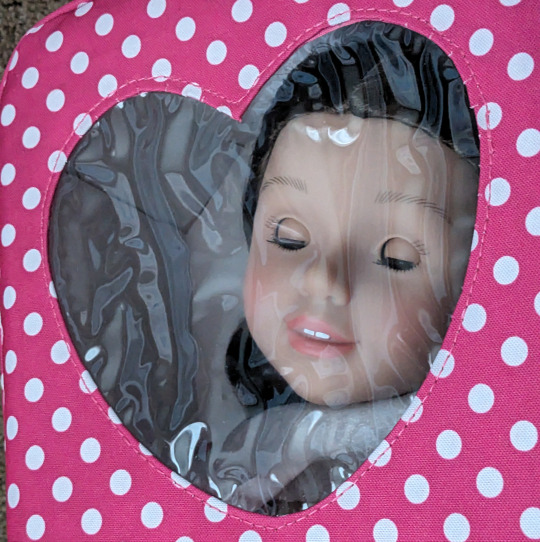
She spent more than a month in a box, making her way halfway across the world to her new home, and now here she is! I'm so relieved that she arrived safely. It was the longest I've ever had to wait for a doll, and through much of her journey I didn't know where she was or when she would be here.
I don't want to drop too big of a spoiler, but listen to this........ she was so worth the wait, and the money. This doll instantly won my heart with how exquisite she is in every way.
Australian Girl dolls were specially made for Australian children, by Helen Schofield, a grandmother who loved dolls. She created the brand when she couldn't find an age appropriate doll that was locally available or good quality. So she created these dolls to help children feel pride in Australian culture, while teaching them about friendship and empathy. There are five girls to befriend--Amy, Jasmine, Emily, Bronte, and Matilda, each representing a different region of the country, ethnicity, and lifestyle.
The company itself has quite high standards. They strive to reduce waste in their product packaging, and they use a factory in China that treats its workers humanely and does not use child labor.

If you've been around my blog for a while, you know how much I love collecting diverse brands and types of play dolls, especially international dolls. Also, this one will be extra special because I actually have an Australian grandmother--she's also a doll collector, and I'm looking forward to showing her my new doll the next time I see her.
After the cut, I'll show you who she is, and talk about why I chose her. I'll compare her with similar-sized dolls as well, and have her do some dressing up.
Before we get to the unboxing, let's check out the little goodies included with my doll.

First is a little pamphlet explaining why the dolls are special, but also represent real girls growing up in Australia.

There's another pamphlet about how to care for your doll.

All of the dolls come with a fun freebie: this cute pair of thongs.

Another freebie (a $30 AUD value) is this very sturdy doll carrier with pockets for accessories.

I also bought a pair of sneakers for my new girl. I figured her feet would be a bit larger than my other dolls, and these are cute, so she now has three pairs of shoes to wear.
Anyway. Enough of the small stuff. Let's let her out of the box.
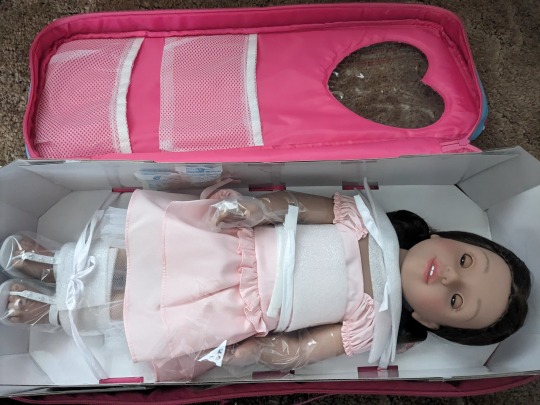
It's Amy from Adelaide!
I chose Amy after three entire years of being indecisive and going back and forth on exactly which Australian Girl I wanted. They're all equally adorable, so I picked Amy because her personality seems very sweet, and I love that she has mixed heritage. According to the Austrlaian Girl dolls website, Amy's family tree is a mix of Aboriginal and Dutch on her mother's side, and English and Indian/Fijian on her father's side. Very representative of modern Australia!
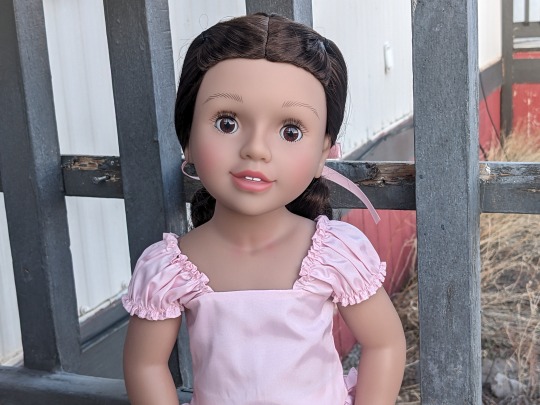
I have no regrets. She is perfect!!! Just the most charming little angel. I am officially WOWED.

I'm seriously impressed at the superior quality of her construction. I understand why she was priced a bit higher than similar dolls. She is, from head to toe, beautifully made, with so many sweet details. Her dress and shoes are also impeccably made and feel very durable.


Her hair is flawless. It's a Kanekalon wig with loose curls, in a gorgeous shade of brown. Her eyes open and close. She has both painted and attached eyelashes.
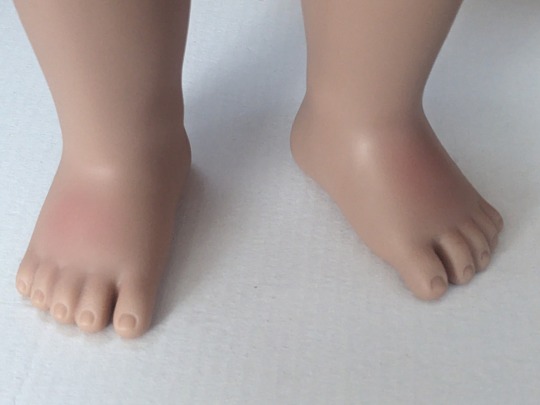
She has a gap between her big toe and the next toe, so she can wear her sandals and thongs.

Her elbows are dimpled and she has subtle blush color on parts of her skin, including elbows and hands.
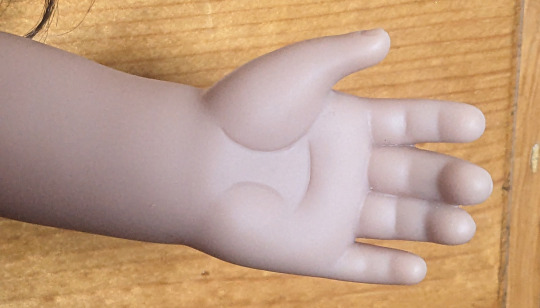
She has a crease across her palm.

She has articulation at her shoulders, hips, and neck. Her limbs, head, and shoulders are vinyl, and she has a huggable soft tummy. I don't really have a strong preference for either cloth torsos, vinyl torsos, or half and half like Amy. They all have pros and cons. This specific construction is nice in that she can wear low-neckline clothes without showing a cloth body, but it does make her harder to repair in case she has to be fixed.
I have a pretty good idea of what she'll be wearing when she's ready to change out of her pink party dress.


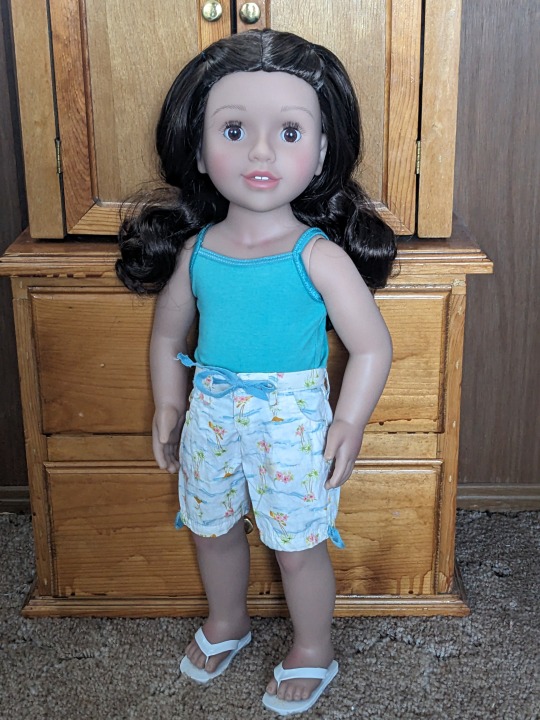



The first photo shows her in a dress I made. The second is a Maplelea dress and hat. The rest are all American Girl brand clothing, except for the shoes. Amy can comfortably wear most stretchy clothes by AG and similar brands like Our Generation, but her feet absolutely will not fit AG, OG, or Maplelea shoes.

The exception to the clothes is some of the tighter pieces. This AG shirt did not fit well. Amy's shoulders are a bit more broad than smaller dolls, and so without some extra give this is too tight.
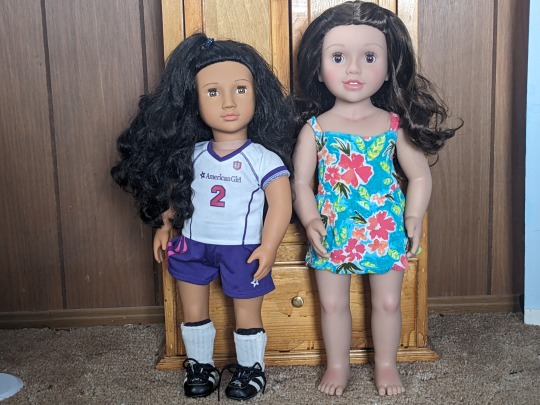
Amy is 20 inches/51 centimeters tall. Here she is next to my Our Generation doll Jordana. I'm using an OG doll because they're actually available locally in Australia. Whereas American Girl dolls, which I usually use when I compare brands, have to make an overseas journey. So it's only fair that I consider any Australians reading this now who are wondering how Amy compares.

Amy is tall, but not the tallest doll in the family! Here she is next to Fernanda, my Karito Kids doll, who is about an inch taller although slimmer. Karito Kids dolls are in fact just slightly skinnier than American Girl dolls, so they have a much easier time sharing clothes.
In conclusion, I highly highly recommend this doll. She's absolutely sublime! I'm so thrilled to have her here, and I'm looking forward to having lots of adventures with her.
Obviously I'm far from Australia, but my Amy will still live her life as if she were in a suburb outside of the city of Adelaide. I've been looking at pictures of the geography of the state of South Australia, and there are some places in the mountainous parts that look pretty similar to the desert southwest where I live. So Amy will have no idea she's actually in the USA. Don't tell her the truth!
56 notes
·
View notes
Text
My (not so) short review that nobody needs hear for this update - KFOS and SOCN
*sighs* Boy, where do I start?
TLDR: KFOS and SOCN turned out disappointing. This is my personal impression, reasons below, warning - lots of letters.
KFOS - first, my minor pet peeve - I don't like that they stopped giving cutscenes with the favorites except Christian. Ram, Kamal and Sara have much fewer of them with Devi compared to him. I also noticed that the cutscenes have lost quality? Just close-ups? I've had the impression before that stories that drop in the rankings get less resources.
Second - I think Stasya doesn't "feel" the story yet, because the only emotions I experienced while reading were my disgust and tension during the dinner scene.
Well also Doran turned out well, his not-so-passive agression with wishing a long life to the queen (especially in the context that he can't express his displeasure with Englishmen directly and he can't kill them all, so he turns to caustic sarcasm) is just slay king energy.
Third - and here starts my rant - a lot of interactions feel artificial and underwhelming. Devi's confrontation with Clara in the street seemed just like that - artificial and not really well thought out. The concept of the scene itself is good - Devi sees how Indian servants are bullied in Britain and lashes out. But the tone, the consequences that author chose to portray is just.... Devi just pulls Guy Richi and shuts the racist arrogant lady up. Yayslay, but… was it me or it was underwhelming?
RANT
Come to think about it, you didn't have to go to Britain to see that behavior (or all those Indian movies I watched and a few books I read kind of misled me). AFAIK this attitude was common in occupied India, as some of the British upper and not so upper class moved there to occupy and make easy money there. They built districts to their taste and style - all those clubs and establishments where Indian servants worked and where Indians were not allowed to enter. The police, too, were subject to the British. This apartheid and humiliation could be seen in India at every step, but Devi notices it only in England? And, bear with me, but I really think she couldn't just go to a high society lady and berate her for the way she treats her servants without some consequences to her and to Christian reputation. Devi has not changed Clara's mind with this argument, and she certainly will not change the mind of the whole of English society, which stands on the opinion of the exclusivity and superiority of the British Empire over all nations that have not risen to the level of their greatness. That's how empires work. Devi's act was from the good heart, but impulsive, and she would be spoken of not with respect but with contempt, saying that Christian had chosen “a rude savage” as his bride. Because Devi is not at home. She is in the land of her enemies. Because the whole thing was truly none of her business and it's not her servant, and also doing that she could have made things much worse for the servant-girl and for Christian's reputation (breach of etiquette! that Devi likes to bring up when someone's rude to her). And in this situation it doesn’t matter how angry Devi and we as readers would have felt, because we are in a different world and we’re not making the rules there. We should be uncomfortable with this scene, we should feel anger and frustration in this scene.My point is that the scene would have been more realistic if at its outcome Devi was faced with indifference, condescension and judgment, as if Devi had done something wrong (she hadn't, she just ended up in a world where such attitudes were the norm). Devi should have felt like she was in the Looking Glass, she should have been thrown off balance by the situation. Girl power slay in the style of "I'm Basu and who are you?" doesn’t work here. Or rather it doesn't give you a nuanced outcome of the situation. Even if Devi had come out of the verbal confrontation victorious in her own eyes, society would have gaslighted her. And because of that sence of powerlessness, her anger would have gotten even greater, and she would have actually cursed Clara with the help of the Dark Mother. And Devi would realize that she can't behave in England the way she did at home. It must be infuriating, annoying, but it's something she and we as players have to put up with. It resonates with us, we have to feel these emotions. I would read, of course, how the heroine deals with injustice, but if we have a story about colonialism and the Dozen trying to throw off that yoke, why aren't we shown such scenes in all their colors? Because mere words and knowledge of the etiquette are not enough. I also think Devi's connection to the Dark Mother's anger could have played out as a sort of Death Note, where Devi curses someone and then misfortunes happen to those cursed people.
I think the artificial tone of the story is my main problem with season two in general. Devi finds herself in a foreign hostile country, but now she's acting like Amala in India and by simple demands she shuts up the lords and ladies left and right just by demanding respect and they just listen to her and shut up. And it looks like a safe route, like there are no stakes there. And with change of the “location” we have to feel discomfort - but not with food, weather and new clothes, but with a feeling like we’re walking on eggshells. Devi, in a conversation with lord What's His Face, intimidates him with Christian, and he stops harassing her. But then the same lord makes a shapito show of provocation at dinner, showing that he doesn't give a damn about Christian's opinion and doesn't give a damn about him in general. I'm not saying there shouldn't be provocation, it shouldn't have been so brazen and direct in words. After all, English high society can masterfully insult in a veiled manner, and the author's skill in writing such dialogues was clearly lacking here. Imho (just my imho) storywise here, in England, Devi should realize how lucky she is to be a member of high Bengali society where she is respected, valued and listened to, when in England she should feel that she is looked down upon, trapped and treated worse, like a second-class person, no matter what her background is. Here, if you are on a route with Christian, there should be a test of his and Devi's feelings in the context of the contempt of the entire upper class society for the "second class people" as they see Indian people to be. Christian has to experience that he has become a pariah in some way by choosing to marry a Devi.
I may have a misconception of how things worked back then, but my thoughts are that it's like all the tension is gone from the story. And there should be - it's a story essentially about two factions who hate each other, who don't want to make contact and settle because it's a story built on a colonial takeover. It's toned down here, yes, it's not historically accurate and all, BUT: if this base of historical events gives you an opportunity to use a great source of conflict, disagreement, and drama - you use it (that's why the provocation with beef at the dinner resonated with me - I was fuming!). And alas, I'm feeling less and less of all that. Especially after the first season that SLAYED.
Also, Devi's offer to Doran to team up with Christian, to use him, would have looked different and even more tense if those political and social nuances worked, and their interaction wasn't just some game of "who knows more". What kind of games are these anyway, they're on the same side, behind enemy lines. Devi could have shared her frustration with her experience in England with Doran and then open some cards to him and admit that they need Christian's resources to determine who's sowing turmoil in the Dozen. There could have been some great GOT-style dialogue here, not just the "The Executioner despises the Englishmen and therefore won't even consider it, he needs to be persuaded", but "The Executioner has been through enough in his life to know that if there's a chance, you have to take it, politics is always played dirty". Doran is described as intelligent after all, not just angry walking muscles.
Well, that's just my thoughts and impressions, you're free to disagree with me here. I'm probably asking too much from a visual novel, I never read them with a magnifying glass to look for nitpicks, but…. But I really liked KFOS S1 ._. And I'm sad for the untapped potential.
SOCN - I was disappointed too. I think Remy's original idea to write that Agnia and Amen attack Livius and Eva but were saved by Seth worked better.
Now, it's friendship and magic, no conflict and drama. The two sides of the conflict resolve everything man-to-man, blow off steam and agree on everything.
And I have the feeling that all the seriousness of the situation has gone somewhere and everything has descended into some kind of farce.
Okay, Amen using Livius and Eva to achive his goals still works fine. But Seth, who fights Amen for fun and then agrees to cooperate with him - no. Just no. It's seems OOC. It doesn't work. Even if he's weakened like a God. Even if he needs Hemseth so much. Seth is a god, he has pride and principles, and there's no way I believe he'd choose to work with someone who kills his followers and weakens him. Neither will Amen agree to work with Seth who he thinks is some kind of Supreme shezmu. He hates the Supreme. He wouldn't go for an alliance either.
Has the writes watched too much of House of the Dragon? WHERE ARE MY CONFLICTS I'M ASKING YOU I'M GOING TO START A SCANDAL
I thought that Remy's decision that Amen and Seth couldn't be friendsto MC like the other favorites had to do with this intransigence, but no, some other reason.
What's the point of not being friends with the favorites if everyone's drinking beer and making truces with each other???
21 notes
·
View notes
Note
I knew you were taking your sweet time with my ask to cook up something amazing and I was right. Really enjoyed & appreciate the long post. 6 hours?!? THANK YOU, Riri. I haven't watched RRR so it was quite surprising to see that veiled scene pic, looked very intimate. I'm aware of the mainstream SM talks of RRR's bromance but surprised there's barely any for Varadeva. This is the 2nd south indian movie that I've liked, the first one was Aarya 2, great film and songs, coincidentally it also has a possessive, psychotic character who'll do anything for his male friend but that's where the similarity ends with Salaar. The difference is in the essence of their friendships. One seems "toxic" but platonic while Varadeva seems like love and has chemistry. I fully relate to all your posts on Varadeva because I had those exact thoughts while watching the movie. Cannot choose one from the pile of greatness (love the parallels). Hope you write more such posts and yes I really enjoyed your mob boss Deva and his Varadha. I'd love it if you make one post about the tattoo on Aadya's arm and what can it mean and can or will cause in the (varadeva) future. All tattoo saga.
Apology for such a long ask.
Part of the reason why Salaar wasn't talked more than RRR bromance I think because they have so little promotion tour, that's the first reason while RRR they have so many press tour to the point I couldn't even catch up with all of the amazing interviews Tarak and Charan give to promote RRR. And they definitely promoting this movie as bromance, without any hints of hesitation.
While Salaar there are only 2 like T W O interviews where Prabhas and Prithvi was in the same room 😂 while the movie is indeed about these two character and even the song all just about these two ..I don't know why they didn't highlight it in all the release short clip, they advertised this movie like the most violence men or whatever while in reality this movie is all about drama between the rulers in khansaar (and Varadeva romance).


They advertised the left poster too heavily while in reality they should have just used the poster on the right everywhere and we all be flocking to the theater lmao
People who just listened to their (unreliable) promo stuff without pondering toward the meaning of this movie they quickly just agree, yes this movie is about violence..and move on. Lmao this is like the case of shot fired wrong advertising strategy. (But aren't we all here even though like only 100 of us maximum trying to make up to it by talking about Varadeva bromace day and night like our lives depend on it.) I really want to talk with their advertising team for Salaar. It's just not as engaging as with Rajamouli.
Perhaps it wasn't their fault. Perhaps because Prithvi and Prabhas are hella busy with their other projects so they couldn't really take their times the way Tarak and Charan could who literally promote RRR movie for a whole year. RRR success I think beside the movie is really good and entertaining (I made a full review about RRR here but it contain spoiler so only read it after you watch RRR or if you're okay with getting spoiler. I post a lot of RRR meta as well you can just click RRR tag in my account and scroll scroll lol), the advertising was top notch as well, they didn't hold back. I mean Salaar getting the 750 crores return with that level of advertising 😭 it was almost a pure luck because if they didn't double the money they spend in production for ceasefire we might not even got Salaar 2 news 😭 thankfully now we can just wait for the continuation of varadeva story.
Second reason beside the advertising I think the content of the movie is also a big part of the consideration, RRR is just more colorful so people could engage with it in lighthearted nature about their bromance because there were also the element of humor when they interact with each other, while Varadeva, they exist in bleak world, no color, black and white, only people like us (what is us actually lmao) who spends more time to really really sit down and rewatch this movie could really pick out the true essence of this movie from within khansaar violence world and pulled out Varadeva love story.
Arya 2? I haven't watched it but it's on my list because I love Sukumar with Allu arjun, they made one of my favorite telugu movie together which is Pushpa, and Pushpa 2 will be released soon, the 2 songs they already dropped for the movie sequel were really great (especially Pushpa Raj whoaa) So someday I will definitely check Arya 2 when I have the time (now I am drowning in Prithviraj 134 credits to his movies lmao he has so many I am literally trying not to be too overwhelmed and take it slowly)
Mob boss Deva and bbg Varadha is literally my favorite so far from what I have written for them lmao the AU was so much fun, they will make a comeback someday lol
And for Aadhya and the tattoo actually, I really really want to talk about this in some kind of continuation story from the canon event in the movie in fic format and not just writing meta, let's see what I can do, but as you can see I am quite slow in many things haha but this time I feel like I shouldn't delay a reply to you only to wait for me writing a fic about the tattoo 😂 while making gifs might take me 6 hours (seriously that might be my longest post in this fandom that I made lmao (thank you to everyone who have like and reblog too 💯💕💐)) and to others I am sorry in advance if that post bothered you with how long you have to scroll when you see it on your dash lmao I keep adding the gifs when i re read about the analysis to support the explanation I think it's more than 25 now 😂 in that single post). writing fics it's at least 6 days business for me or even 6 weeks then would turn into 6 months, it happened so many times 😂 (so no promise for fic but it might be written)
Tell me about what you feel if you managed to watch RRR 👏👏 it's as gay as Salaar no doubt lmao RRR is the door that introduces me to the wonder that's south indian cinema.
#anon#answer#salaar#rrr#you are so cute thank you for all the engaging asks#I really love to talk more about Salaar#like interacting with my meta and analysis because that's what fandom all about#Salaar deserves so much more love than what they got right now#genuinely a good movie with their amazing world building that not many have made before#kudos to Prashanth for pushing through with this ideas despite people keep doubting him about this project#also don't apologize for long ask I love it#also I kindly apologize to one more ask in my inbox i see you I didn't ignore you but I have plan on how I want to answer it#🙏🙏🙏🙏🙏🙏
19 notes
·
View notes
Text
'*•.¸my personal shopping list¸.•*'
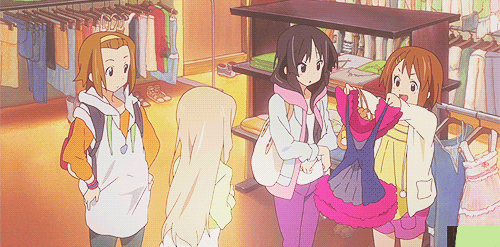
Im a huge money spender(/// ̄  ̄///)... and always when i go shopping i buy bunch of unnecessary sweets, clothes and other things i dont even need!! i have used so much money that even my mom isnt giving me any money anymore....(¬_¬;) so my only plan is to save money and make a list so i dont use it on useless stuff. (ill also do reviews on them on my tiktok @futurebillionarexo (my phone is broken so im not updating on there in a while)
My wellness shopping list+*:ꔫ:*﹤
garnier fructis hair food banana 3-in-1 hairmask
creatine (gym era coming soon...)
asics gel-rocket 10 volleyball shoes white/classic red
cerave foaming facial cleanser (it should be good for my combo skin)
neutrogena hydro boost water gel
cerave eye repair cream
coconut oil (so many benefits omg)
manyo pure cleansing oil
dove intensive repair shampoo
garnier fructis banana conditioner
silk bonnet
azec indian clay mask
evening primrose oil capsules
vitamin E
gua sha (steel)
castor oil
glasses
big boy black baggy jeans
a digital camera (to get that 2000s aesthetic)
revlon hot air brush
a lip pencil
nyx butter gloss
makeup remover
individual lashes (i need to find fluffy but natural looking ones...)
individual lash glue (RECOMMENDATIONS!?!?)
#shopping list#glowup#wonyoungism#lashes#makeup#skincare#sakura haruno#k on anime#fashion#style#y2kcore#2000s aesthetic
35 notes
·
View notes
Photo
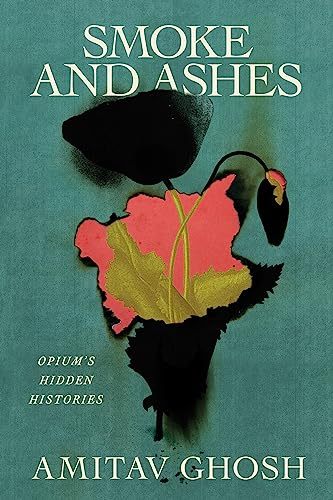
Smoke and Ashes: Opium's Hidden Histories
"Smoke and Ashes: Opium’s Hidden Histories" is a sweeping and jarring work of how opium became an insidious capitalistic tool to generate wealth for the British Empire and other Western powers at the expense of an epidemic of addiction in China and the impoverishment of millions of farmers in India. The legacy of this “criminal enterprise,” as the author puts it, left lasting influences that reverberate across cultures and societies even today.
Written in engaging language, Smoke and Ashes is a scholarly follow-up to the author’s famous Ibis trilogy, a collection of fiction that uses the opium trade as its backdrop. In Smoke and Ashes, the author draws on his years-long research into opium supplemented by his family history, personal travels, cross-cultural experience, and expertise in works of historical verisimilitude. Composed over 18 chapters, the author delves into a diverse set of primary and secondary data, including Chinese sources. He also brings a multidimensional angle to the study by highlighting the opium trade's legacy in diverse areas such as art, architecture, horticulture, printmaking, and calligraphy. 23 pictorial illustrations serve as powerful eyewitness accounts to the discourse.
This book should interest students and scholars seeking historical analysis based on facts on the ground instead of colonial narratives. Readers will also find answers to how opium continues to play an outsize role in modern-day conflicts, addictions, corporate behavior, and globalism.
Amitav Ghosh’s research convincingly points out that while opium had always been used for recreational purposes across cultures, it was the Western powers such as the British, Portuguese, the Spaniards, and the Dutch that discovered its significant potential as a trading vehicle. Ghosh adds that colonial rulers, especially the British, often rationalized their actions by arguing that the Asian population was naturally predisposed to narcotics. However, it was British India that bested others in virtually monopolizing the market for the highly addictive Indian opium in China. Used as a currency to redress the East India Company (EIC)’s trade deficit with China, the opium trade by the 1890s generated about five million sterling a year for Britain. Meanwhile, as many as 40 million Chinese became addicted to opium.
Eastern India became the epicenter of British opium production. Workers in opium factories in Patna and Benares toiled under severe conditions, often earning less than the cost of production while their British managers lived in luxury. Ghosh asserts that opium farming permanently impoverished a region that was an economic powerhouse before the British arrived. Ghosh’s work echoes developmental economists such as Jonathan Lehne, who has documented opium-growing communities' lower literacy and economic progress compared to their neighbors.
Ghosh states that after Britain, “the country that benefited most from the opium trade” with China, was the United States. American traders skirted the British opium monopoly by sourcing from Turkey and Malwa in Western India. By 1818, American traders were smuggling about one-third of all the opium consumed in China. Many powerful families like the Astors, Coolidges, Forbes, Irvings, and Roosevelts built their fortunes from the opium trade. Much of this opium money, Ghosh shows, also financed banking, railroads, and Ivy League institutions. While Ghosh mentions that many of these families developed a huge collection of Chinese art, he could have also discussed that some of their holdings were most probably part of millions of Chinese cultural icons plundered by colonialists.
Ghosh ends the book by discussing how the EIC's predatory behaviors have been replicated by modern corporations, like Purdue Pharma, that are responsible for the opium-derived OxyContin addiction. He adds that fossil fuel companies such as BP have also reaped enormous profits at the expense of consumer health or environmental damage.
Perhaps one omission in this book is that the author does not hold Indian opium traders from Malwa, such as the Marwaris, Parsis, and Jews, under the same ethical scrutiny as he does to the British and the Americans. While various other works have covered the British Empire's involvement in the opium trade, most readers would find Ghosh's narrative of American involvement to be eye-opening. Likewise, his linkage of present-day eastern India's economic backwardness to opium is both revealing and insightful.
Winner of India's highest literary award Jnanpith and nominated author for the Man Booker Prize, Amitav Ghosh's works concern colonialism, identity, migration, environmentalism, and climate change. In this book, he provides an invaluable lesson for political and business leaders that abdication of ethics and social responsibility have lasting consequences impacting us all.
Continue reading...
18 notes
·
View notes
Text
ARC REVIEW: Unladylike Rules of Attraction by Amita Murray

4/5. Releases 5/14/24.
Vibes: "must marry or else", vaaaaague guardian/ward sorta kinda?, two people living on the edge of English society, light mystery
Heat Index: 6/10
Court sitar player Anya doesn't expect to inherit much, if anything, when her client dies. But the Dowager Countess Budleigh has left Anya half her fortune--with one condition. She must marry by her twenty-fifth birthday... which is four months away. Otherwise? The money will go to Lord Damian Ashton, the family outsider and now trustee. (Oh--and they think he killed his way to the title.) As Anya begins looking for a husband, Damian is there, initially to irritate and then, when she's accused of murder by the Budleighs, to help. The question is--if they make it out of this, can he bear to see her with someone else?
The second in Amita Murray's Marleigh Sisters series, I found Unladylike Rules of Attraction faster-paced and more exciting than the first installment, which is always lovely. The chemistry between Anya and Damian had me immediately--and though the relationship unfurled a bit more rapidly than I expected, their back and forth remained a treat. As did the very true reality of them both living on the edges of English society, seen as oddities or fetishized due to their races (Anya had a white father and an Indian mother, and Damian's grandmother was a Jamaican Black woman).
So while I do have nitpicks here and there, I have to say that this was an engaging romp with serious insights.
Quick Takes:
--If you enjoy romantic leads that snark, you'll be into this. Damian and Anya are kind of at each other's throats from the jump, but in, like, a fun way. They both find each other annoying, mostly because they want to bone, and I support that. I also really love the marriage plot setup: she's supposed to marry, or he gets everything, so maybe the best thing would be for them to marry each other...? But NO, God NO, that would be AWFUL.
Damian also has a lovely younger brother who enters the scene as a supporting character. He initially thinks that his brother is making a play for Anya, and the "I am quietly seething from across a ballroom" content was great.
--But, as I mentioned earlier, there's a lot of quiet understanding these two have for each other. Anya is seen as an exotic marvel at Queen Charlotte's court... to an extent. There isn't much actual real respect there, because women hate her (and let's be real, are often jealous of her) for who she is and men want to fuck her without offering any legitimacy or respect.
Although Damian didn't have an identical experience to Anya, he's also very much an outsider. I mean, people just assume this guy murdered someone to get a title... basically, let's be real, because he's of Jamaican descent. The novel is covering, basically, a lot of nasty, racist shit. However, it maintains an optimistic, if realistic attitude, and understanding reality doesn't mean that Murray is going to keep her leads from falling in love. It's a tough balancing act, and I think she executed it well.
--That said, these two do move pretty fast. And I'm not someone who loves a slow burn, right? I enjoy reading sex on the page early. It's not that the sex happens so EARLY in this book. It's more that I don't think there was quite enough build up between Damian and Anya. The chemistry was there, but when it began I was pretty surprised.
It's not a huge issue, but if I had to give a critique, that would be my main one.
--One thing I really appreciated was the way Murray dealt with Anya's trauma surrounding her separation from her sisters. She knows where they are, she loves them--but she can't really bring herself to be close to them because of this chasm of years apart. She wants to be! She feels guilty! But that doesn't make her reluctance built on years of separation go away.
--The mystery and murder stuff here is pretty light; there's nothing that's too much to bear here. But I found it entertaining, and I can be a hard sell with mystery, so that's a good sign.
The Sex:
This is an open door romance. It's not super explicit, it's not over the top. There are a few scenes, nothing super wild, and I do think Murray could go into a bit more detail with it. But as it is: if you enjoy a Lorraine Heath level of heat (and I do too, I could always appreciate more though), you'll enjoy these.
Moving along at a clip, Unladylike Rules of Attraction is both romantic and astute. I see it being compared to Bridgerton, and while I get that on paper... First off, this is a lot smarter in general than that show. Second, it's certainly more attentive to the issues of race. If you want something fun and different and very much its own thing, check this out.
Thanks to NetGalley and Avon for providing me with a copy of this book. All thoughts and opinions are my own.
13 notes
·
View notes
Text
Why do Indians prefer RideBoom more than Ola and Uber?
Indians prefer RideBoom over Ola and Uber for several reasons. Let's explore some of these reasons based on the search results:
Competitive Pricing: RideBoom offers competitive pricing compared to Ola and Uber [1]. This can be appealing to Indian customers who are looking for affordable transportation options.
Better Customer Service: RideBoom is known for providing excellent customer service [1]. This can be a significant factor for Indians who value good customer support and assistance.
Safety and Security: RideBoom prioritizes the safety and security of its passengers [1]. This can be particularly important for Indian customers who are concerned about their well-being during their rides.
Availability in Smaller Cities: RideBoom has a presence in smaller cities, providing transportation options to customers in areas where Ola and Uber may have limited coverage [1]. This can make RideBoom a preferred choice for individuals residing in these locations.
User-Friendly App: RideBoom offers a user-friendly mobile app [1]. This can attract Indian customers who appreciate a seamless and convenient booking experience.
Promotions and Discounts: RideBoom frequently offers promotions and discounts to its customers [1]. This can be enticing for Indians who are looking to save money on their rides.
Support for Local Economy: RideBoom is an Indian company, and supporting it can be seen as contributing to the local economy [1]. This may resonate with Indian customers who prioritize supporting homegrown businesses.
Positive Word-of-Mouth: Positive reviews and recommendations from friends and family can influence Indians to choose RideBoom over Ola and Uber [1]. Personal experiences and word-of-mouth can play a significant role in shaping consumer preferences.
Learn more:
10 Reasons why Uber is better than Ola
Uber vs Ola: The battle for dominance in India’s taxi market | Mint
Ola vs Uber: The latest score in the great Indian taxi-app game
#rideboom#rideboom app#delhi rideboom#ola cabs#biketaxi#uber#rideboom taxi app#ola#uber driver#uber taxi
12 notes
·
View notes
Text
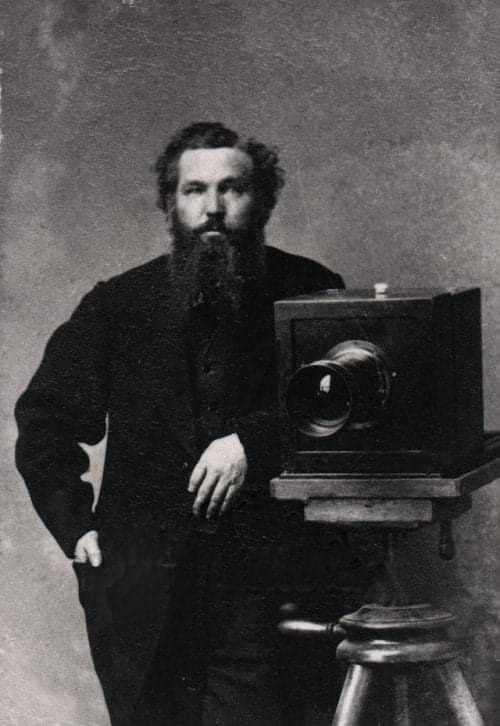





On 17th October 1821 Alexander Gardner, renowned photographer of the American Civil War was born in Paisley.
Gardner became an apprentice jeweller at the age of 14, lasting seven years. He had a Church of Scotland upbringing and was influenced by the work of Robert Owen, Welsh socialist and father of the cooperative movement. By the time he reached adulthood he and his brother James had the idea to create a cooperative in the United States that would incorporate socialist values, they travelled to Iowa with this in mind in 1850, Alexander returned to Scotland to raise money for the project and purchased the Glasgow Sentinel, quickly turning it into the second largest newspaper in the city.
On his return to the United States in 1851, Gardner paid a visit to the Great Exhibition in Hyde Park, New York, where he saw the photographs of Mathew Brady for the first time. Shortly afterward, Gardner began reviewing exhibitions of photographs in the Glasgow Sentinel, as well as experimenting with photography on his own.
In 1856, Gardner decided to over permanently to America, eventually settling in New York. He soon found employment with Mathew Brady as a photographer. At first, Gardner specialized in making large photographic prints, called Imperial photographs, but as Brady’s eyesight began to fail, Gardner took on more and more responsibilities. In 1858, Brady put him in charge of the entire gallery.
Two years later, Gardner opened a portrait studio for Brady in Washington, D.C. It was so successful that it helped to support Brady’s more extravagant New York studio.
When the American Civil War erupted in 1861, Gardner assisted Brady in his effort to make a complete photographic record of the conflict. Brady, however, refused to give Gardner public credit for his work. Gardner therefore left Brady in 1863, opened a portrait gallery in Washington, and continued to photograph the hostilities on his own. His photographs President Lincoln on the Battlefield of Antietam as seen in the photos and other portraits of Lincoln are among the best-known photographs of the war period.
Gardner’s Photographic Sketch Book of the Civil War, a two-volume collection of 100 original prints, was published in 1866. When Brady petitioned Congress to buy his photographs of the war, Gardner presented a rival petition, claiming that it was he, not Brady, who had originated the idea of providing the nation with a photographic history of the conflict. Congress eventually bought both collections.
In 1867 Gardner became the official photographer for the Union Pacific Railroad. Primarily active in Kansas, he photographed the building of the railroad and the new settlements that grew up near it. He also compiled valuable photographic documentation of the Plains Indians of North America.
Returning to Washington, he gradually lost interest in photography and devoted the rest of his life to philanthropy.
In 1871, Gardner gave up photography entirely to start an insurance company. He lived in Washington until his death in 1882. Regarding his work he said, “It is designed to speak for itself. As mementos of the fearful struggle through which the country has just passed, it is confidently hoped that it will possess an enduring interest.”
The first pic is of Alexander Gardner, next is Ta-Tan-Kah-Sa-Pah (Black Bull) of the Brule-Sioux tribe, North Dakota, President Lincoln on Battle-Field of Antietam and Abraham Lincoln and his son Thomas, then Lewis Payne, one of the men involved in the assassination of Abraham Lincoln and finally the Leavenworth, Lawrence, and Galveston Railroad Bridge across the Kaw River at Lawrence, Kansas, in 1867
23 notes
·
View notes